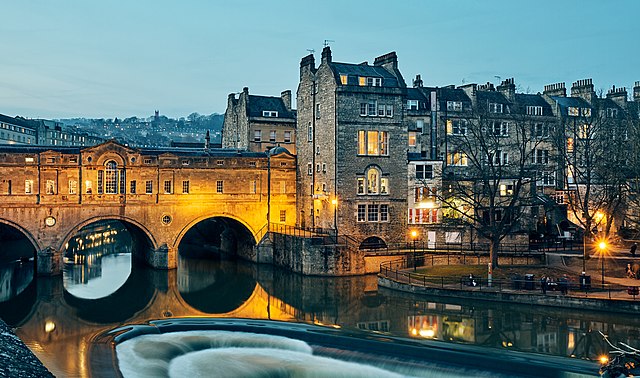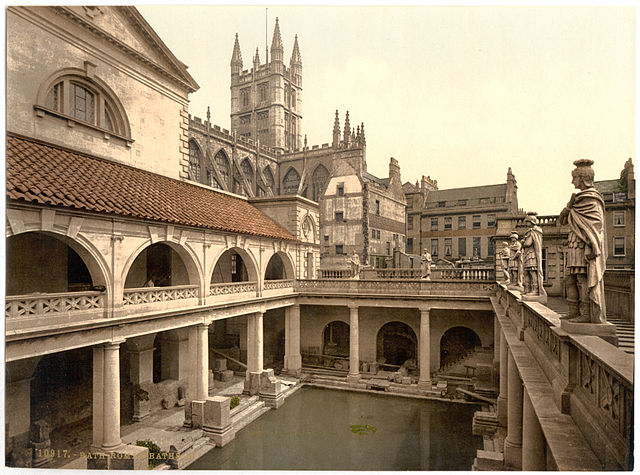Bath's city walls were a sequence of defensive structures built around the city of Bath in England. Roman in origin, then restored by the Anglo-Saxons, and later strengthened in the High medieval period, the walls formed a complete circuit, covering the historic core of the modern city, an area of approximately 23 acres (9.3 ha) including the Roman Baths and medieval Bath Abbey. In the mid 18th century most of the town walls and gatehouses were demolished to accommodate the Georgian development of the town. However, the line of the walls can still be traced in the town's street layout.
Remains of Bath's city walls
The East Gate
This surviving portion of the wall is hidden away by a loading bay off Old Orchard Street and shows the scale of the walls, three metres thick and six high
Bath is a city in the ceremonial county of Somerset, England, known for and named after its Roman-built baths. At the 2021 Census, the population was 94,092. Bath is in the valley of the River Avon, 97 miles (156 km) west of London and 11 miles (18 km) southeast of Bristol. The city became a UNESCO World Heritage Site in 1987, and was later added to the transnational World Heritage Site known as the "Great Spa Towns of Europe" in 2021. Bath is also the largest city and settlement in Somerset.
Pulteney Bridge
Skyline of Bath city centre with Bath Abbey
19th-century photochrom of the Great Bath at the Roman Baths. The entire structure above the level of the pillar bases is a later construction and was not a feature of the building in Roman days.
Bath Abbey







